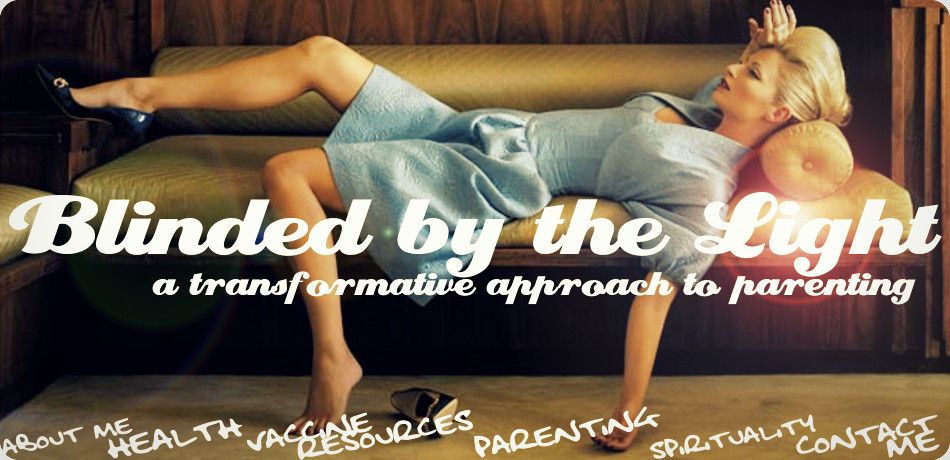Every year, the Advisory Committee on Immunization Practices (ACIP) evaluates the current CDC's recommended immunization schedule.
Less then 2 years ago (October 2010), the ACIP had recently adopted an “evidence-based” process that considers quality of evidence, benefits & risks, preferences of affected populations, and of course economic impact. Interestingly, the first exercise of this approach for this year was for the committee to vote to expand routine HPV vaccination to males and to add the tetanus, diphtheria and acellular pertussis vaccine for expecting mothers.
But first, let’s learn more about the ACIP….
About the ACIP
Some may think that the CDC’s recommended schedule is backed solely on scientific evidence. But consider this, less then 2 years ago (October 2010), the ACIP had recently adopted an “evidence-based” process that considers quality of evidence, benefits & risks, preferences of affected populations, and of course economic impact. Makes me wonder what process was in effect prior to 2010.
It also makes me wonder, is the scientific evidence and benefits the same in Japan since they have a very different schedule then ours. One example is the varicella vaccine. It is kind of ironic that the first varicella vaccine was developed in Japan and was licensed in Japan in 1988, but still isn't on their routine immunization schedule. Also, interesting to note that Japan recently (March 2011) suspended use of the Hib vaccine (ActHIB) and Prevnar. One large discrepancy as well is that Japan did not immunize children under 2 years of age until recently (1995), of which children under 24 months receive at most 6 injections versus more then double that (13) here in the United States. [1]
Moving forward, the ACIP consists of 15 professionals that provide a vote on the guidance given to the CDC. These individuals hold credentials specifically associated with immunization (not neurology, gastrology or toxicology) and they have been precisely selected by the Secretary of the US Department of Health.
The ACIP is the only entity within the federal government that makes recommendation for routine administration of vaccines to children and adults, which also determines number of doses, intervals, precautions and contraindications.
Would like to know more about this group? Here are the conflicts of interest listed directly on the Annals of Internal Medicine site publishing the update 2012 immunization schedule. [2] [3]
-Dr. Bennett: Consultancy: Greater Rochester Health Foundation, NYU Columbia University; Employment: University of Rochester; Grants/grants pending (money to institution): National Institutes of Health, NYS, Centers for Disease Control and Prevention, Greater Rochester Health Foundation.
-Dr. Coyne-Beasley: Grants/grants pending (money to institution): Merck.
Dr. Ehresmann: Support for travel to meetings for the study or other purposes: Centers for Disease Control and Prevention; Employment: State of Minnesota; Grants/grants pending (money to institution): Centers for Disease Control and Prevention, Environmental Protection Agency; Payment for lectures including service on speakers bureaus: National Foundation for Infectious Diseases.
-Dr. Jenkins: Consulting fee or honorarium: Centers for Disease Control and Prevention/ACIP; Support for travel to meetings for the study or other purposes: Centers for Disease Control and Prevention/ACIP.
-Dr. Keitel: Consulting fee or honorarium: Centers for Disease Control and Prevention; Support for travel to meetings for the study or other purposes: Centers for Disease Control and Prevention; Grants/grants pending: Novartis; Payment for lectures including service on speakers bureaus: National Foundation for Infectious Diseases, American Society for Microbiology, Infectious Diseases Society of America, Centers for Disease Control and Prevention, European Society of Clinical Microbiology and Infectious Diseases, International Society for Influenza and other Respiratory Virus Diseases, Options for the Control of Influenza.
-Dr. Marcy: Employment: Southern California Permanente Group per diem, Vaccine Safety Datalink Project; Expert testimony: Pediatric Stevens-Johnson case, Pediatric E. coli infection case; Payment for lectures including service on speakers bureaus: Medical Education Speakers Network, American Academy of Pediatrics, National Foundation for Infectious Diseases, Symposia Medicus; Stock/stock options: IRA and investments under control of financial consultant Smith Barney.
-Dr. Rosenbaum: Consulting fee or honorarium: ACIP; Support for travel to meetings for the study or other purposes: ACIP.
-Dr. Vasquez: Payment for lectures including service on speakers bureaus: Merck.
Onto The Recommendations….
Tetanus, Diphtheria and Acellular Pertussis Vaccine For Pregnant Mothers
Some of the most important changes for physicians in the 2012 immunization schedule involve the tetanus, diphtheria and acellular pertussis vaccine for pregnant women which is designed to protect infants from pertusiss. According to the 2012 schedule, women should receive the vaccine during pregnancy, preferably after 20 weeks of gestation. Pregnant women not vaccinated during pregnancy should receive Tdap immediately postpartum. [2] [4] [5]
“It’s a twofer,” said ACIP chairwoman Carol Baker, MD, professor of pediatrics at Baylor College of Medicine, Houston. “By vaccinating in the late second or third trimester, you protect the mother and you protect the infant.” [6]
One might assume that this recommendation for pregnant mothers was made after meticulous clinical studies of the positive and negative effects on the developing immune system and neurological system of unborn babies or pregnant mothers. Especially since the ACIP adopted an “evidence-based” process that declares the review of quality evidence. Nope – nothing.
Even the head of the ACIP (Committee Chair Carol Baker ) admits the absence of data for the tetanus-diphtheria-pertussis vaccine and its use in pregnant women because this population is typically excluded from clinical trials, which creates a burden when trying to make recommendations on vaccine use in pregnant women.
.“Pregnant women are orphans when it comes to medication and vaccination research,” [6] [7] - Carol Baker professor of pediatrics at Baylor College of Medicine and the Committee Chair of the 2012 ACIP
No peer-reviewed, published studies illustrate it is safe or effective to give tdap to unborn babies and pregnant mothers.
None.
Yet the ACIP voted 14 to 1 for this recommendation.[7]
HPV4 Vaccine for Boys
One of the biggest changes to the new 2012 immunization schedule was the addition of the HPV vaccination recommendations. The ACIP now recommends routine HPV4 vaccination in boys 11 to 12 years of age, with catch-up vaccinations at age 13 to 21. However, HPV4 vaccination may start as early as young as 9 years of age in boys. [2]
There is not one scientific study or documented clinical trial to evaluated Gardasil’s potential carcinogenity or genotoxicity.
There is currently no way of knowing how the HPV vaccine affects fertility, birth defects, cancer, if it can pass through breast milk, or if it can alter your genes or the genes of your future children (genotoxicity).
The panel voted 13-0, with one abstention, to make HPV4 vaccination with Gardasil (Merck) routine for boys aged 11 to 12 years.
This decision was, no doubt, made in reaction to a 2011 trial, sponsored and designed by Merck & Co, Inc. This study did not use a saline solution placebo group (an amorphous aluminum hydroxyphosphate sulfate (AAHS) adjuvant was used as the placebo group). The study also does not attempt to say Gardasil prevents cancer in boys, instead the vaccine is stated as preventing HPV-6, 11, 16, or 18 – which causes external genital warts not cancer. [8] [9]
The authors of the study state that further clinical trials should be performed.
The authors noted that while they find it likely that the prevention of HPV infection and disease in men may have additional benefits, such as preventing anal, genital and throat cancers, these benefits need to be directly demonstrated through further clinical trials.[9]
“It shows that if we vaccinate males early enough, we should be able to prevent most cases of external genital warts in this population." [9]
“Palefsky noted that warts are a common problem in young people and are often associated with depression, social stigma and loss of self-esteem.” [9]
Interesting to note that in 2009, a study funded by the National Cancer Institute and the American Cancer Society states that vaccinating boys against HPV is not cost-effective.[10]
May want to consider that it is believed that smoking has more to do with the progression of an HPV infection to cervical cancer than any other single factor, as smokers with HPV go on to develop cervical cancer much more frequently than infected non-smokers.
Cervical cancer is also well documented to be caused by an infection acquired through sexual contact. So in addition to avoiding smoking and eating a nutritious diet, it is behaviorally avoidable.
Other Changes
Another big change in the schedule is a switch in the meningococcal vaccine, which expands vaccination down to age 9 months for certain children at increased risk.
The ACIP now recommends vaccination against Hepatitis B for adults younger than age 60 who have type 1 and type 2 diabetes, as soon as possible after diabetes is diagnosed.
Clarification is provided for administration of hepatitis B vaccine and hepatitis B immune globulin to infants weighing <2000 g and for infants weighing ≥2000 g who are born to hepatitis B surface antigen-positive mothers.
Egg allergy is no longer a contraindication for the influenza vaccine. Adult patients should continue to be vaccinated against the flu annually.
I urge you to the read the full 2012 Recommended Immunization Schedule here .
References:
[1] Japan Halts Use of Two Vaccines After Deaths. Mar 8 2011. http://online.wsj.com/article/SB10001424052748704041504576185611566311144.html
[5] 2012 Adult Immunization Schedule Broadens Recommendations for HPV and Hepatitis B Vaccinations. Infection Control Today. http://www.infectioncontroltoday.com/news/2012/02/2012-adult-immunization-schedule-broadens-recommendations-for-hpv-and-hepatitis-b-vaccinations.aspx
[6] DeNoon, Danial. CDC Committee: To Stop Deadly Infant Whooping Cough, Give Vaccine Late in Pregnancy. WebMD Health News. Jun 23 2011
[7] ACIP Recommends Expectant Mothers Receive Pertussis Vaccine. Infectious Diseases In Children. July 2011
[8] Efficacy of Quadrivalent HPV Vaccine against HPV Infection and Disease in Males. New England Journal of Medicine. Feb 3 2011
[9] HPV Vaccine Works for Boys: Study Shows First Clear Benefits. Science News. Feb 4 2011
[10] Jane J. Kim, Sue J. Goldie. Cost-effectiveness analysis of including boys in a human papillomavirus (HPV) vaccination program in the United States. British Medical Journal, online October 9, 2009









